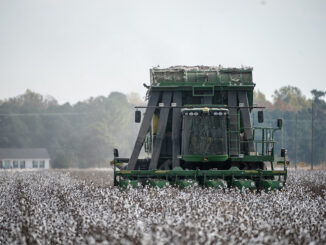
A recent analysis of 2017 agricultural data reveals significant changes in Hoke County’s farming landscape compared to 2012, underscoring the challenges faced by local farmers. The report from the USDA’s Agricultural Census, which offers a detailed look into various aspects of agriculture in the county, indicates a decline in farms, changes in economic dynamics, and shifts in agricultural production.
Though the data is a few years old, it’s useful to indicate trends in the slow-moving agricultural market. Between 2012 and 2017, Hoke County saw a 6% decrease in the number of farms, coupled with an 8% reduction in land dedicated to farming. Moreover, the average farm size also shrank by 2%. These figures suggest a notable shift in agricultural practices and land use, potentially due to economic pressures or changing market demands.
Economically, the agricultural sector experienced a significant downturn, with the market value of products sold decreasing by 21%. Government payments to farms saw a sharp decline of 60%, and farm-related income fell by 30%. Despite these challenges, total farm production expenses also decreased by 31%, allowing for a 12% increase in net cash farm income. These numbers paint a complex picture of the economic resilience and struggles within the farming community.
Livestock, poultry, and their products continue to dominate the county’s agricultural sales, contributing to 83% of the total. The land use is predominantly for cropland (61%), followed by woodland (27%) and pastureland (4%). This distribution underscores the county’s reliance on a balance between crop farming and livestock rearing.
The county’s farming scene is diverse, with 40% of farms ranging between 10 to 49 acres and 32% spanning 50 to 179 acres. However, half of the farms report sales below $2,500, highlighting a preponderance of small-scale operations.
Demographic data show a varied profile of farmers, including details on age, race, military service, and organic farming practices. This diversity reflects the changing face of agriculture in the county.
Notably, technological adoption is high among Hoke County farms, with 80% having internet access. This indicates a trend towards modernization and potentially new avenues for innovation and market access.
The top crops in the county include soybeans, corn, and cotton, while broilers and other meat-type chickens lead in the livestock sector.
As Hoke County’s agricultural landscape continues to evolve, these trends and changes are critical for understanding the future of farming in the area. The data highlights the resilience and adaptability of the local farming community, even as they navigate a period of economic and environmental challenges.

